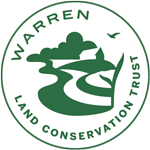Deirdre Robinson, Jim O’Neill, Steve Reinert
With permission from the Warren Land Conservation Trust and RIDEM, the Saltmarsh Sparrow Research Initiative (SSRI) installed 26 nest arks in low-lying areas of the Jacob’s Point saltmarsh in Warren, RI. Based upon NOAA high tide predictions and multiple years of GPS mapping of SALS nest outcomes at this 35 acre site, we selected nest locations with the highest risk for flooding. Prior to installing the arks, we determined that 100% of females returned to the nests and continued to incubate eggs and feed nestlings that had been placed within nest holders.
 Methods
Methods
We designed and installed arks that would reduce nest failures by providing buoyancy during tides that would otherwise have inundated the nests. Approximating the weight of one female and four chicks, we tested the arks by adding weights to a “dummy” nest to determine the amount of flotation required.
The nest ark consists of a coffee filter holder with (blue) flotation mats that are affixed to a wooden dowel. The 18″ dowel was inserted into a 24″ PVC pipe that was sunken into the peat, nearly flush with the marsh surface. There is minimal friction between the dowel and plastic pipe, allowing the ark to rise and fall with the tides.

Use this link to view a time-lapse video of the tidal-driven rising and falling of an arked nest:
In all 26 arked nests, the female returned to incubate eggs, feed nestlings, and remove fecal sacs at the same frequency as pre-arking.
We arked 26 nests at JP this season, while 45 nests were not arked, serving as controls. Based upon the finding that arks were sitting too low in the water, we requested and received permission from RIDEM to add an additional 9 mm flotation pad for the final flooding cycle to accommodate the extra weight of a wet nest.
Results
Fledging rate for the arked nests was 23% vs. 16% for control nests (Table 1, Fig. 1). Only one arked nest flooded, in contrast to the nine control nests that were inundated (Table 1). Depredation rates for arked nests were higher (69%) than controls (56%), which may partially attributable to the fact that depredation historically increases later in the season, when most arks were permitted to be installed. Nest failure due to unknown causes (e.g., abandonment, female death) was 4% for arked nests and 9% for controls (Table 1, Fig. 1).
Table 1.
| Arked Nests (n=26) | Control Nests (n=45) | |
| Flooded | 1 (4%) | 9 (20%) |
| Depredated | 18 (69%) | 25 (56%) |
| Failed (cause unknown) | 1 (4%) | 4 (9%) |
| Successfully Fledged | 6 (23%) | 7 (16%) |

Discussion
Small sample size cautions us to limit inferences about the success of arks in reducing SALS nest failures due to flooding, but these preliminary findings are encouraging. The best indicator of reproductive success is the fledging rate, which was 7% higher for arked nests compared to controls. Had we been able to install arks early in the 2024 breeding season without an arbitrary cap on the number of arks that could be installed, it is likely that the percentage of successful arked nests would have significantly exceeded that of the control nests.
Only one arked nest flooded because the dowel was too short to accommodate a 36 cm King Tide; this shortfall can easily be remedied by using 23″ dowels. A reciprocal relationship has been observed over eight seasons between nest failures due to flooding and depredation. The 2024 season revealed overall lower flooding rates and higher depredation rates than in previous seasons. In future seasons, when higher flooding rates are expected and when arks are installed earlier in the breeding season, it is reasonable to expect a significant reduction in SALS nest failure due to flooding.
As SALS are under review for official listing as “Endangered “by the USFWS this year, multiple stakeholders are seeking cost-effective and scalable interventions for reducing nest failures due to flooding. The ark materials cost less than $10/each and are readily available. SSRI will gladly provide a video of ark construction for all stakeholders who share our common goal of postponing the date of extinction for this bird that is an indicator species for the health of obligatory saltmarsh residents as tides continue to rise.
